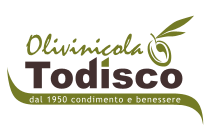Putignano - Tourism, history, food and wine, art and culture.
 Pietro Calisi, known as a Farnodd, is one of the storytellers of the early 1900s. Born in 1855 and died in 1940.
Pietro Calisi, known as a Farnodd, is one of the storytellers of the early 1900s. Born in 1855 and died in 1940.He used to present himself to his audience in a dark tailcoat and top hat. He arrived in the central square where the show took place in a carriage and from this he recited his verses aloud, without the aid of any form of amplification. He is spoken of at a regional level with an article in the newspaper "Gazzetta del Mezzogiorno" of 31 December 1937 entitled "A joyful custom in Putignano - The Plantation of the Offshoot" A joyful custom in Putignano - The Plantation of the Propaggine
The figure of him is said to have inspired the official mask of the Putignano Carnival, Farinella
Like any good satirical comedian, he needed a shoulder to serve him the joke on a silver platter. His shoulder was Pietro Galluzzi, known as u triesten (the Triestino)
 Stefano Caldi, known as "U Bar'Sidd" (a small inhabitant of Bari) because his father was originally from Bari, born on 29 December 1888 and died on 30 January 1981. Originally his surname was Cauto, a surname that his father changed to Warm for all his children. Stefano was born to Giuseppe by profession bastagio, that is to say port porter and by Veronica Genco and by profession he was upholsterer.
Stefano Caldi, known as "U Bar'Sidd" (a small inhabitant of Bari) because his father was originally from Bari, born on 29 December 1888 and died on 30 January 1981. Originally his surname was Cauto, a surname that his father changed to Warm for all his children. Stefano was born to Giuseppe by profession bastagio, that is to say port porter and by Veronica Genco and by profession he was upholsterer.
One of the Propaggini Artist and masks of the most popular characters that Putignano has had. He embodied a simple and spontaneous satire, a character that reached directly to the hearts of those present.
 Pietro Campanella alias "mest Pit Scialam" or "u massar di Scagghiun" (from the farm of Scaglioni owned by him). The father and teacher of the generation of the current Propagginanti artists. great supporter of the Putignano Carnival, exceptional rhyming creator, as well as a great building contractor of the 60s.
Pietro Campanella alias "mest Pit Scialam" or "u massar di Scagghiun" (from the farm of Scaglioni owned by him). The father and teacher of the generation of the current Propagginanti artists. great supporter of the Putignano Carnival, exceptional rhyming creator, as well as a great building contractor of the 60s.He wrote the rhyming verses together with his cousin Giuseppe Genco, for them it was pure fun, before he rhymes. We also missed a few foul jokes for which self-censorship was ready. Campanella participated in the Propaggini from 1949 to 1979. In addition to being an offshoot, he was a poet in the vernacular. Here is a composition of him:
a vicchiezz ì na carogn
Quann l'omm fasc vècchie
devènd tòtta peddècchie,
tutt còs arrappelèsc
i chiù nòdd vedduquèsc;f'nèscen i bullor
i accumèn'zen i delour,
ogni dèì i nu defètt
i s ferm por a lancett:
a dà a cord nan 'z penz
i arrumman e sì i menz;
i'not'l ca t'abbel,
fasc cartedd u fucel
i c mitt u resc't sop o gr'llett
ton na'n'zind niscion effett.
A vicchiezz i na carogn.
nann'àbbott chiou a zambogn
i rumman arrabbiat
vocck d pel i cap sp'lat
addavir ch'è na fr'gsator
quann s guast u cazzator:
por a mangià t vin a sost
senza dint nann'acchy gost,
pird por l'app'tet
tott cos d'vent'n sciapet
i gastem ! porca m'sery !
i rumman cu d's'dery.
A desc'r sti cos nan'g' v'rgogn
ma a vicchiezz i na carogn.
 This website project born from the idea of Gianni Musaio is enclosed in a team spirit and is the result of the collaboration of people, ordinary citizens, who care about the historical, cultural, artistic, geographical, food and wine heritage of the historic center of Putignano, a town in to live.
This website project born from the idea of Gianni Musaio is enclosed in a team spirit and is the result of the collaboration of people, ordinary citizens, who care about the historical, cultural, artistic, geographical, food and wine heritage of the historic center of Putignano, a town in to live.

The historic center of a town is the fulcrum of the territory, where ancient stories, traditions and culture of those who preceded us are preserved. You too can contribute to leaving the testimonies of the past to the generations to come, taking care of them.


















